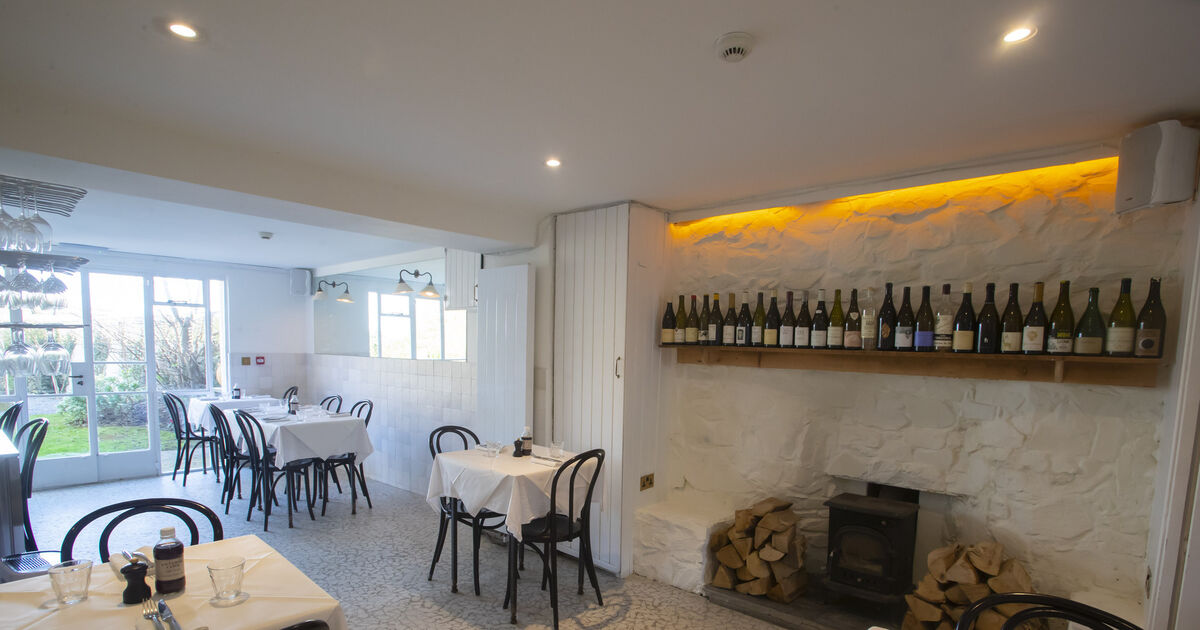
IF FOOD has played a major part in the rebirth of Tramore, beginning with the opening of Sarah Richards’ Seagull Bakery, then Dublin-based restaurateur Peter Hogan’s decision to return to his hometown to open Beach House with chef Jumoke Akintola — his wife and business partner — was a real imprimatur of positive change.
Beach House is in the basement of a tastefully restored Victorian pile. Whitewashed old stone and raw timber dominate an upper room and smart wine cellar, with seating for busier summer months, but we descend further into an homage to light, bright Iberian café-restaurants of southern European sojourns: well-lit, tiled floor and walls, simple furniture, white-clothed tables.
Hogan admits he would prefer no music at all but barely perceptible tunes waft from the upper area like the occasional fumes from an upwind smoker.
There are no larger parties to provide a spritz of boisterous conviviality, only tables of two, all leaning into each other, and a curious, conspiratorial quietude initially reminds of the hushed reverence with which highly irregular Irish diners of old would accord rarely entered dining rooms.
The dark, wild and wintry night means glass doors and windows that normally open up onto the lovely garden in summer now act as black mirrors, closing off the outside world, and yet it all works blissfully well, a calming, grounding, intimate space.
Beach House has pared back as the season draws to a close and tonight a ‘classic fish and chips pop-up’, served every Saturday until December 23, but the iconic seaside takeaway is just part of a three-course menu, a short one, admittedly — three starters, three mains, two desserts. The usual Beach House menu isn’t that much longer: for all intents and purposes, it is the winter vision of the summery Beach House.
Perhaps it is a nod to the playful post-modern culinary revivalism of recent years, but this menu would have been reassuringly familiar to preceding generations, beginning with a seafood cocktail in a lettuce-lined sundae glass.
Crispest late season leaves cradle locally-caught brown shrimp, toothsome little gobbets of savoury marine umami, insanely addictive, especially in a traditional coral-pink Marie Rose sauce that blithely alights on the sweet spot between sugar and acid.
Ms Baker sadly doesn’t care for oysters, so I opt for the third leg of a troika of starters, mackerel pâté, with sharing in mind.
I’ve eaten and made so much of the stuff over the years that its shorn of that frisson of anticipation that generally accompanies the arrival of a dish, but this is very good; hefty, smoked fish flavours creamed into textured docility, reminding me why I’ll never tire of it, and it is perkily paired with sweetly pickled beetroot.
With the fish and chips a racing certainty, the next question is, of the remaining two dishes, do we order monkfish scampi or sole?
Ms Baker has no doubts — sole for her. The table next door has just taken delivery of wildly alluring monkfish scampi and there are audible wrenching noises to be heard from the compartment of my heart that deals with edible affairs until, in a fit of inspiration/gluttony, I manage to negotiate a smaller portion of the scampi to accompany my beer battered haddock with tartare sauce and chips.
The crisp-fried fish arches seductively on the plate and we might as well be down on the promenade outside a chipper, tearing it apart with our fingers, popping piping hot chunks of golden crackling batter housing melting haddock into ravenous gobs.
The tartare sauce is divine, unctuousness arrested with exquisite and refreshing dill, and triple-cooked chips are perfection; crisp on the outside, steaming hot and floury within.
The batter on the scampi is a different animal, akin to tempura, pale, near flaxen and with a gentler, softer crunch into nuggets of tender monkfish, while a silken aioli startles with sharp, bracing astringency of garlic.
The sole swims in a glistening pool of melted brown butter and herbs sufficient to near float this exquisite-looking creation back down to the nearby ocean from whence it came. It tastes even better, beautifully cooked, sweet caramel of brown butter a gloriously decadent partner to the demure white fish. A simple salad of fine green leaves completes round two.
Sticky toffee pudding doesn’t need extra sugar of butterscotch sauce until you taste both together and swoon while almond tart with lemony crème fraîche is a timeless classic, immaculately rendered.
A fundamental part of the Hogan-Akintola restaurant formula is a very considered wine list, including great sherries. Though the Beach House list is fabulously well travelled, I pause at the Rhone; torn between two choices, I opt for both. Hervé Souhaut’s Domaine Destezet (2019) is lithe, supple, floral, peach notes with a soft oaky finish. We know we’re not going to finish the Dard & Ribo Crozes-Hermitage Blanc (2019) but are more than happy to have a glass each and then bring the rest home; similar floral and white stone fruit notes to the Souhaut but with greater depth and a muscular complexity.
And just like that, Beach House becomes one of my favourite Irish restaurants. Akintola’s fine cooking is very deceptive, almost sculptural in its singular simplicity, in the manner it allows ample space for superb produce to engage with deftly deployed flavours and Hogan’s gentle, warm yet calmly authoritative and knowledgeable presence in front of house completes the package. Beach House doesn’t shout out its wares like a carnival barker of old down on the nearby beachfront funfair but the story it does tell is one very much worth listening to.
- Food: 9
- Service: 9
- Value: 9
- Atmosphere: 9
